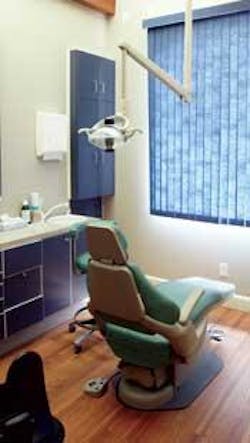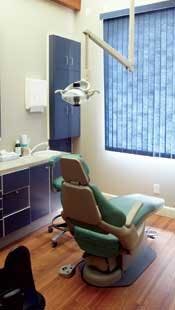Fill those chairs!
Here are some quick and easy tips for filling downtime and increasing production
by Annette Ashley Linder, RDH, BS
For more on this topic, go to www.dentaleconomics.com and search using the following key words: production, scheduling, coding, Annette Ashley Linder.
Do you remember when, during difficult times, we would say, "Drop back and punt"? There is no doubt that these are difficult economic times. People are worried about losing their jobs and their insurance as well as their retirement funds slipping away. This scenario does impact on patient decisions regarding discretionary spending. Many dentists are reporting a slowdown in the schedule with patients canceling and/or postponing treatment.
If there is any good news to be had, it is that if you are older than 30, you know that we will get through this tough cycle. With this in mind, now more than ever is the time to review and update practice administration, clinical, and team systems. Communicating and nurturing existing patients and attracting new patients builds your practice for the future.
After more than 20 years of consulting with dentists throughout the country, one common trait that I see is the amount of undone dentistry sitting in dental charts. Contributing to this are factors that include:
1) lack of an organized system for securing and scheduling the treatment at the time it is presented (i.e., who is responsible for treatment and benefits discussion, questions answered, financial arrangements solidified)
2) not enough time in the schedule to discuss necessary treatment today
So, rather than dropping back and punting because you think you have no other choice, here are two easy-to-implement team procedures that will fix the problem. These nuts-and-bolts proven solutions engage the entire team to fill the schedule for today, build productivity for the future, and it won't cost you a dime.
Sourcing patients with the stay-today philosophy
At the morning huddle, all team members review patient records. In addition to clinical treatment today, medical alerts, financial and personal notes, the team identifies all patients with undone (incomplete) dentistry and any unscheduled family members.
Fill openings in the hygiene schedule by sourcing patients who see the doctor today and are due or overdue for their hygiene appointment. Comfortable and positive communication includes:
"In preparing for your visit today, Dr. Smith noted that it has been ______ since your preventive dental hygiene appointment. Dr. Smith has asked me to be sure to arrange this appointment for you, and I think that we will be able to save you a trip back and accomplish this for you today."
In the same way, fill all openings in the doctor's schedule with the hygienist offering the patient the opportunity to save a trip and combine their hygiene appointment with seeing the doctor for completion of their dental work. At this time, and if appropriate, advise the patient of any remaining dental benefits that will be lost at the end of the year.
Schedule family members that are overdue using the same positive dialogues:
"Dr. Smith has noted that we have not seen Bob for his oral health examination and professional prophylaxis. Dr. Smith is concerned and has asked me to see to it that Bob is scheduled."
Fill all empty chairs
Audit the record to determine the last time the patient received an updated or comprehensive examination (0150). In most dental practices that I visit, the patient had a new patient exam when they first entered the practice and that may have been 10 years ago. Because of time constraints at the routine dental hygiene appointment, we tend to maintain the patient in the system with a periodic oral exam which does not allow the time necessary to dialogue with the patient. It is amazing how much dentistry is detected, presented, and accepted when there is ample time allotted for an intraoral camera "tour of the mouth."
One of my clients recently increased personal production by 17% simply by utilizing any extra (open) time in the schedule to perform a take-your-time-and-bring-things-up-to-date exam on all patients, whether they were "due" for it or not. (This exam does not need to be coded as 0150 but it is important to note that many insurance carriers will reimburse for Code 0150 every three to five years.) However, this model is not about generating revenue from the exam fee, but rather using all open time today to get the dentistry out of the chart and into the mouth. Examples include:
→ A patient may have had a comprehensive 0150 exam two years ago but still has dental treatment remaining.
→ A patient has completed the palliative and/or basic restorative portion of their dental care and now is the time to discuss esthetic opportunities.
Doctors who utilize open time with an extended (recall) hygiene patient examination, increase their production. Plan for this at the morning huddle. Depending on the size of the practice, the hygienist may move to another treatment room or, rather than calling the doctor to hygiene for the exam, the hygienist brings the patient to the doctor.
The same model exists for the hygiene schedule. If the schedule is completely filled today, the hygienist sets the stage for a comprehensive oral health status examination with the doctor on the next visit and time is programmed into the next appointment. However, when there is open time today, the hygienist proceeds with the exam.
Utilizing what would have been open or downtime is the answer to hygienists' lament of "I never have enough time." By extending time with the patient, the hygienist is able to update records and radiographs, complete the periodontal examination, and enroll the patient in necessary periodontal treatment, recommend and dispense (sell) professional home care products available in the office, ask for the referral, discuss tooth whitening and take impressions for same, tour the mouth with the intraoral camera, display patient education modules, and discuss and answer treatment options and questions.
While each member on the dental team needs to be enthusiastic and well versed in discussing the benefits of optimum oral health and contemporary dentistry, the hygienist is in a unique position. Personal and professional relationships develop because the hygienist sees the patient on a continuum, every three, four, or six months.
Patients often look to the hygienist for help in decision-making and will ask for feedback after the dentist's treatment recommendation. "Do I really need that? What do you think? What would you do?" are frequently asked questions.
These simple steps maximize the schedule utilizing every team member and every treatment room today, while building and revitalizing for future productivity. In short, don't be caught like a deer in the headlights. When the time, space, doctor, and staff are available, use them wisely.
Annette Ashley Linder, BS, RDH, is a recognized leader in the field and an award-winning speaker and consultant. Reach her via the Web at AnnetteLinder.com, by e-mail at [email protected], or by phone at (804) 745-6015.

